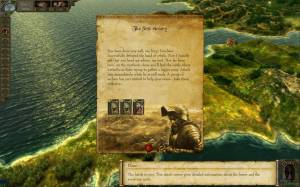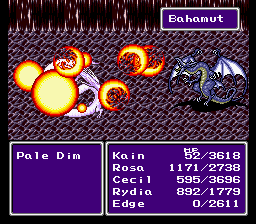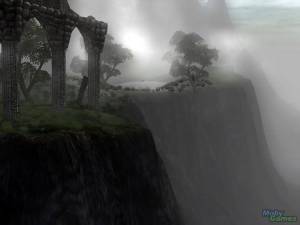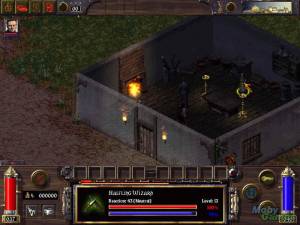Game Classification
Dungeon Campaign Synergistic Software (Japan), Synergistic Software, 1978
Classification
VIDEO GAMEKeywords
Market
This title is used by the following domains:- Entertainment
Audience
This title targets the following audience:Age : 12 to 16 years old / 17 to 25 years old
General Public
Gameplay
The gameplay of this title is Game-based(designed with stated goals)
The core of gameplay is defined by the rules below:
Similar games
 Dungeon Campaign is one of the earliest role-playing games for home computers and in a way again, like Beneath Apple Manor of the same year, an obscure Rogue-like -- two years before Rogue actually coined the term.
Dungeon Campaign is one of the earliest role-playing games for home computers and in a way again, like Beneath Apple Manor of the same year, an obscure Rogue-like -- two years before Rogue actually coined the term.
Dungeon Campaign is a basic fantasy dungeon crawl that doesn't even care about a background story -- enter dungeon, slay monsters, amass treasures, find exit. Not even a fabulous all-powerful item to be found here! Unusual is that the player does not control a single character, but rather a fighting force of 25 men -- who, effectively, represent the player's hit points.
The game starts out by generating the four random dungeon levels the player will be exploring. This takes a few minutes, but as the maps are shown on-screen while generated, the player can try to memorize them. After this introductory cutscene begins the game proper. In a top-down view, the player guides the party (a red block) through the level's maze. All commands are entered by key presses, using LRUD for walking left, right, up, or down which needs getting used to.
The player will soon encounter green blocks -- groups of werewolves, vampires, orcs, goblins, basilisks, giant spiders, gargoyles, trolls, griffons, and whatnot. Walk onto them to pick a fight, walk the other way to try evade -- some monsters are slow an can be evaded, while others will catch the player.
Combat is done in a basic manner: Dices are rolled for the player and the opponent; depending on the result, the player and the enemies' losses are computed; last man standing's the winner. An interesting twist is that the dice rolls are interactive: random numbers scroll up the text window, with the player pressing a key to stop them when the player feels lucky.
After a successful fight, the player can search to find and grab any treasure carried by the defeated enemy. Sometimes the player will find a magic carpet, with which the player can fly, making the player randomly fly about the current level -- great for exploring, and indispensable for reaching parts of the map that cannot be reached (yes, map-generation isn't so sophisticated).
When a certain time spent on a level, the player will wake a special monster (grey block) who'll begin to chase the player. If he catches the player, the player will lose one of the party. On earlier levels, this block represents a man-eating dragon who is quite easy to escape, deeper levels feature a giant snake chasing the player in real-time, or a specter who, not being restricted by walls, goes directly for the player and is sure to get the player after some time.
Other hazards found in the maze include pits, necromancers or pteridactyls (sic!) that transport the player to other parts of the level, or even to other levels (the abundance of these makes this game somewhat similar to the Snakes and Ladders board game), or areas with poisoned gas that the player will have to leave quickly (in real-time, again). The player will get a warning if next to one of these dangers, but not the player is not told where exactly it is. The player can try to jump over a square where the player suspect some dangers -- this feature can also be used to move quickly, for example to escape enemy monsters.
The main goal, of course, is to find the stairs down to the fourth level, and find the exit. [source:mobygames]
Distribution : Retail - Commercial
Platform(s) : Apple II - Atari 800
 Français
Français English
English








.jpg)


